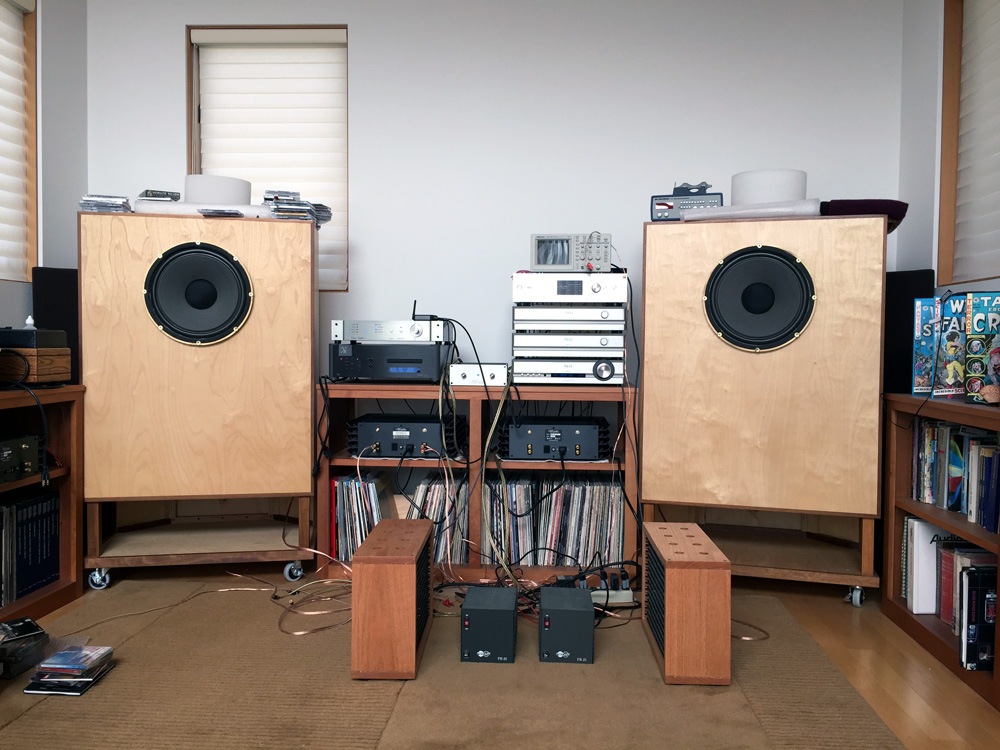I've recently chewed my way through a variety of pre-amps looking for one with the balance, drive and resolution to do the First Watt J2 the justice the hyperbole it attracts demands.
That’s interesting. I’m certainly not ruling out my issue being upstream of the Pass, though as stated the Verdier is a good match on paper at least, and has huge amounts of gain on tap (20db on its highest setting, which is way too loud in this context). One thing that occurred to me when reading the manual again is the big claims for the Aleph being almost unique in having only two gain stages is maybe a tad disingenuous if it just means it’s passing that buck upstream to the preamp!
I am not, I'm afraid, a fan of Tannoys, and I am fairly confident that this pre-power combo would probably highlight that brand's shortcomings rather than unearthing their best qualities.
Fair enough, and a lot of folk aren’t. What I love about my system as it is set up is it sounds massive, pretty much life-size on jazz etc, and it just has so much dynamic life and impact. Drums sound like drums, a bass guitar sounds like a bass guitar etc. Effortlessly. It is not however a detail system, it is more broad brush. If you want to hear a pin drop somewhere or analyse the reflections off the back wall of the studio then go upstairs and listen to the LS3/5As! It does what it does, and I really like what it does. It sounds how I remember the big main monitors in studios sounding, which is little surprise given that is what it is.
The Pass kind of ‘over-focused’ it, and it is far from the first solid state amp to do this. By bringing everything into sharp relief everything gets smaller and somehow the bass gets a bit lumpen and boomy where it wasn’t at all with the 303 or Stereo 20. I get that this is likely output impedance and damping factor, it makes sense and is well documented. These amps have higher than modern amounts, and the Monitor Golds would have been voiced expecting it as that what amps of their time were like. Both these vintage amps roll-off earlier too, so whilst that won’t be audible here they may possibly be sending less energy into the cabs. I assume the Pass keeps going right down into the subsonics.
The thing I really don’t understand is why it sounds darker. Drum kit metalwork is no longer as crisp, alive and dynamic, it is very clean, but far harder to pick up on the nuance of hits of differing velocity on different parts of cymbals, hi-hats etc. It has got squashed somehow, pulled back in the mix. Given in some ways I preferred the Audio Synthesis passive may well point to a preamp matching issue. I certainly felt the top end was a bit more alive and more in context with the passive. I won’t be giving up on it until I fully understand this and have tried a few more options. I have a friend who could pop round with a Conrad Johnson pre (PV10 IIRC), but I doubt that is hugely different to my Verdier.
Pass uses Tannoy's for their final reference when making their amps so they should be a good match, it's also possible that the cheaper 303's are simply better!
Interesting, I’d not seen that. 1,200 JFETs a channel is just bonkers, I need to read up on his thinking there. He is a fascinating designer. They are different Tannoys though, the HPD are certainly solid-state era. The Monitor Golds are kind of the crossover point between the valve era Silvers and Reds and everything that came later, but I do view them more as a valve-era speaker. All the classic Tannoys have a lot in common, but they did adapt to market changes and usage context.


